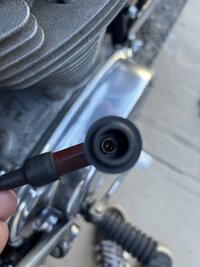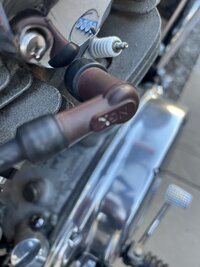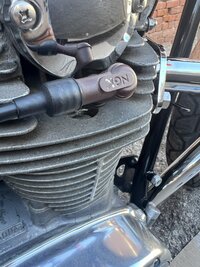Only 14gal to Mountain View thenJust gassed up madness, high compression 750 cammed, she's getting a bit tired, VM34 carbs, fairly high gearing, riding curvy state highways. Couple of hammer down runs to 75MPH or so, (testing purposes only)
112 miles 2.2 gallons, yup 50MPG.




